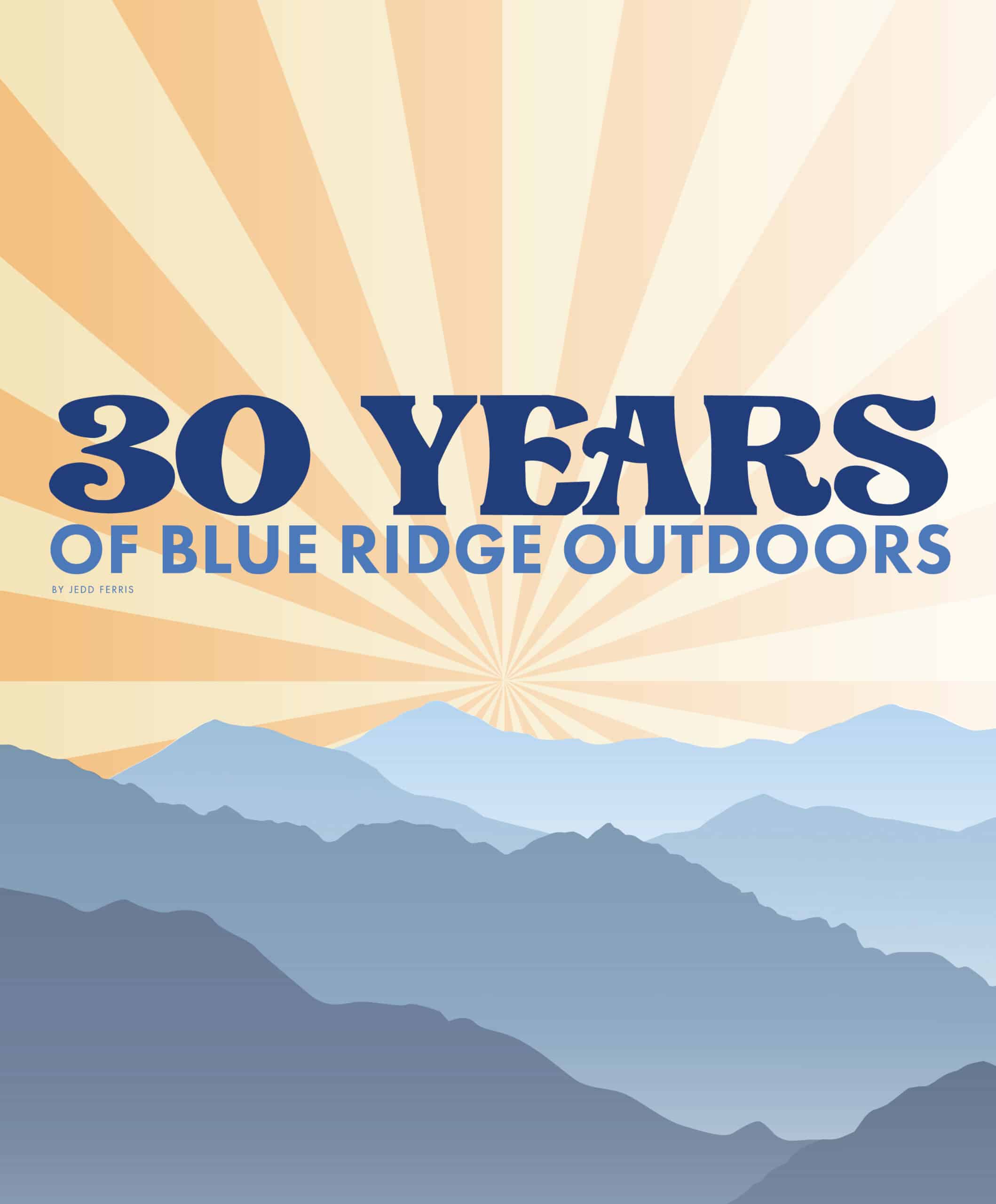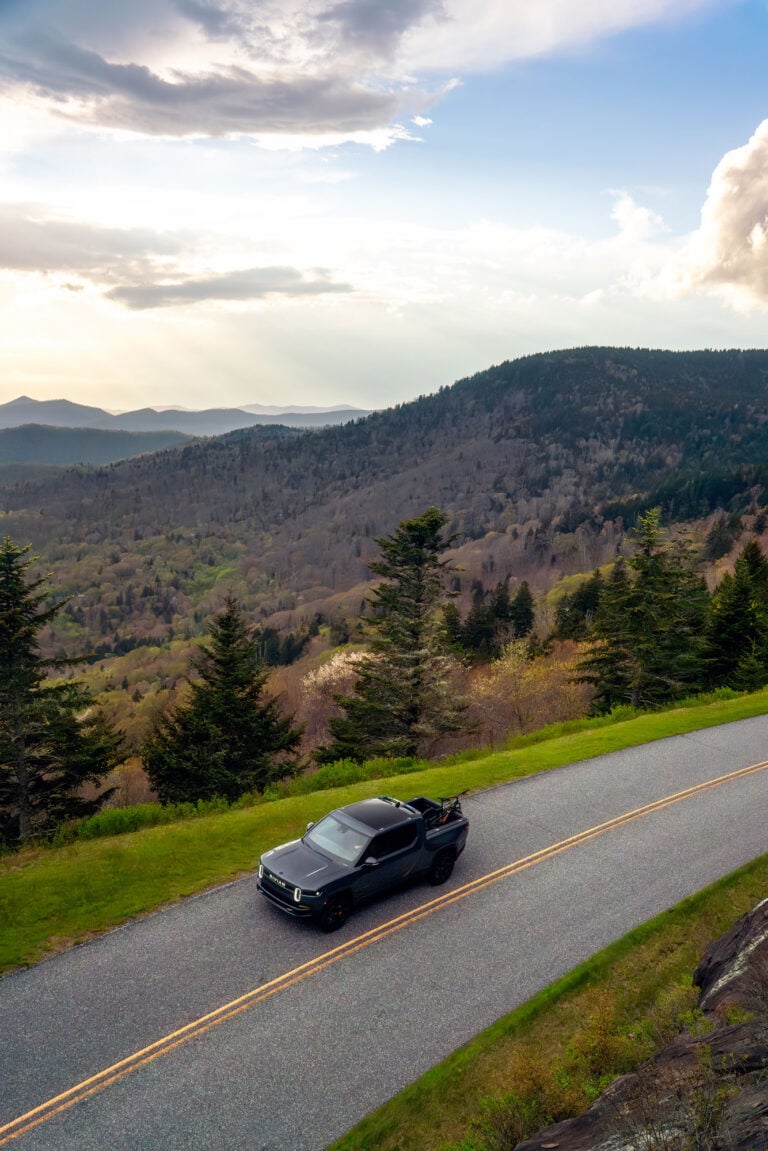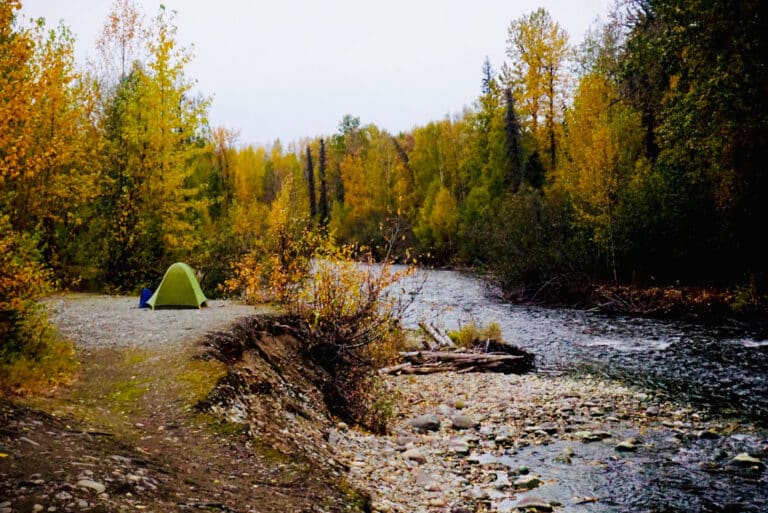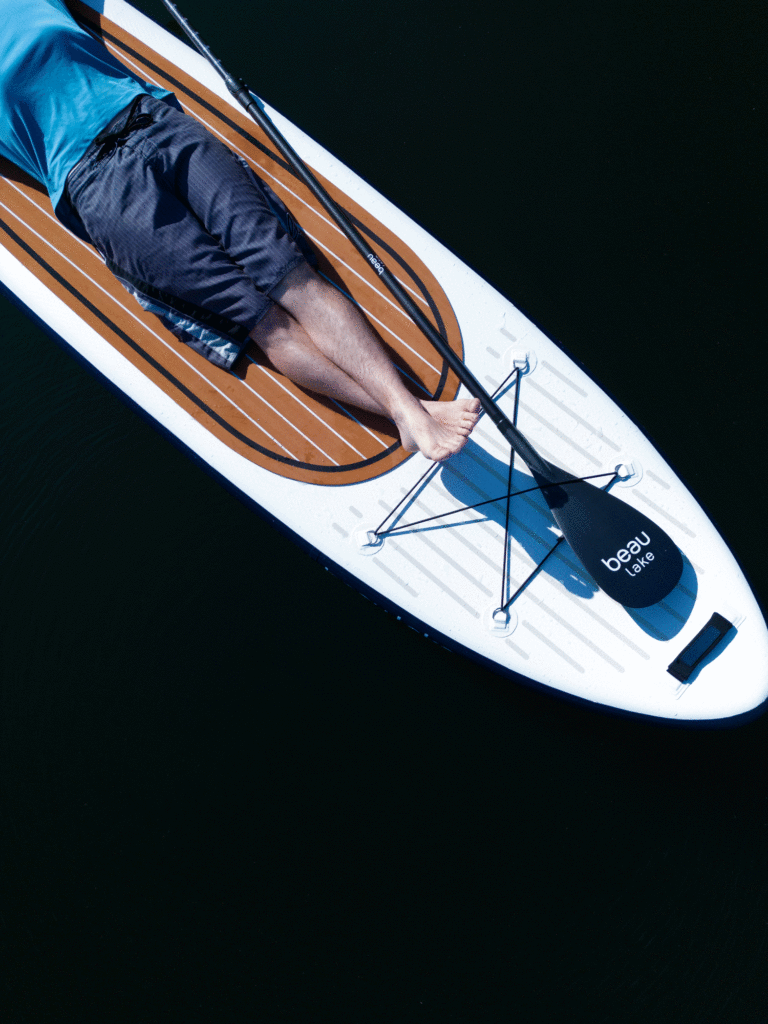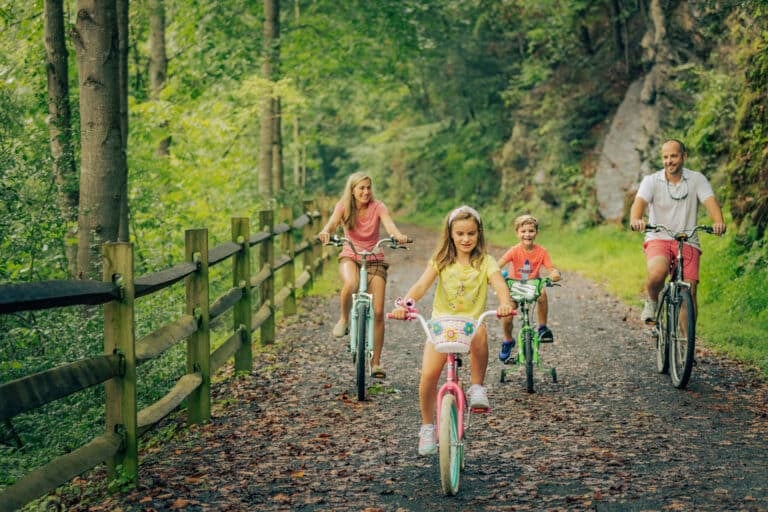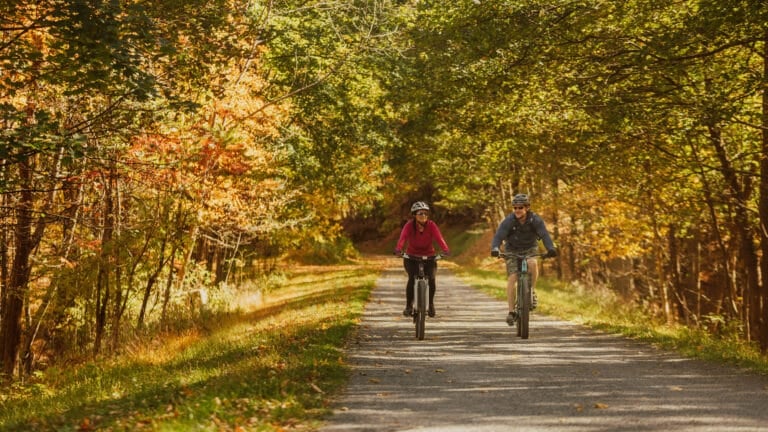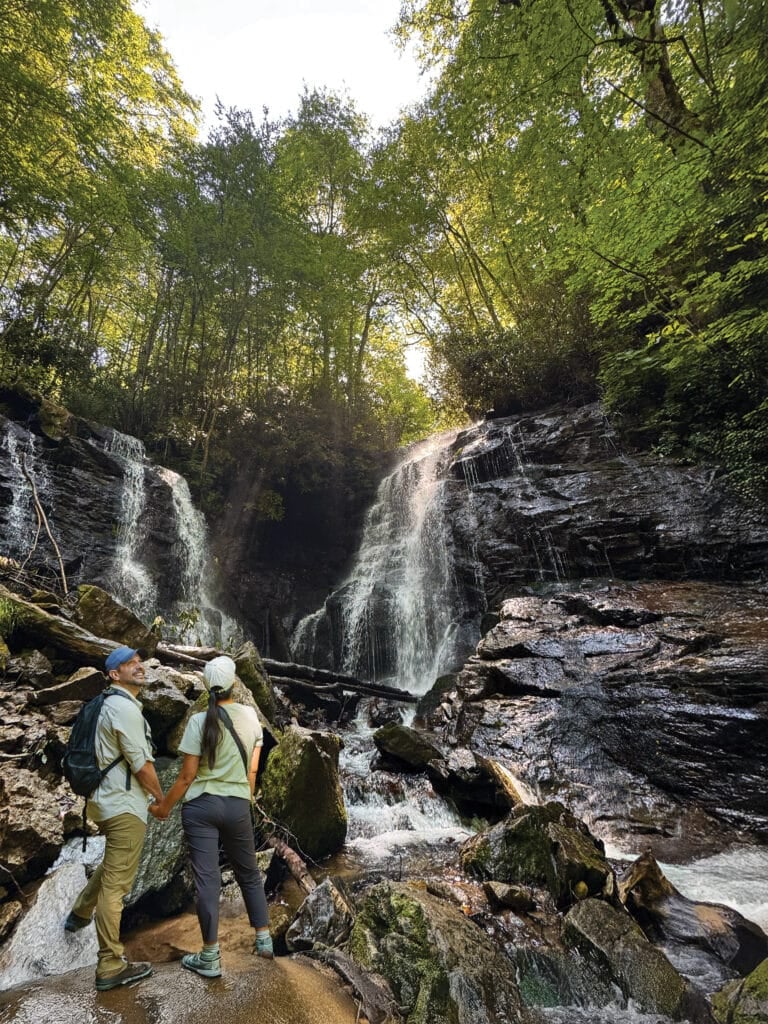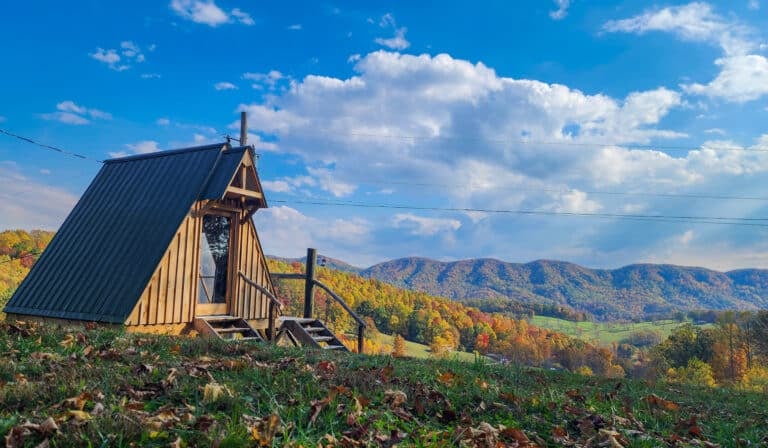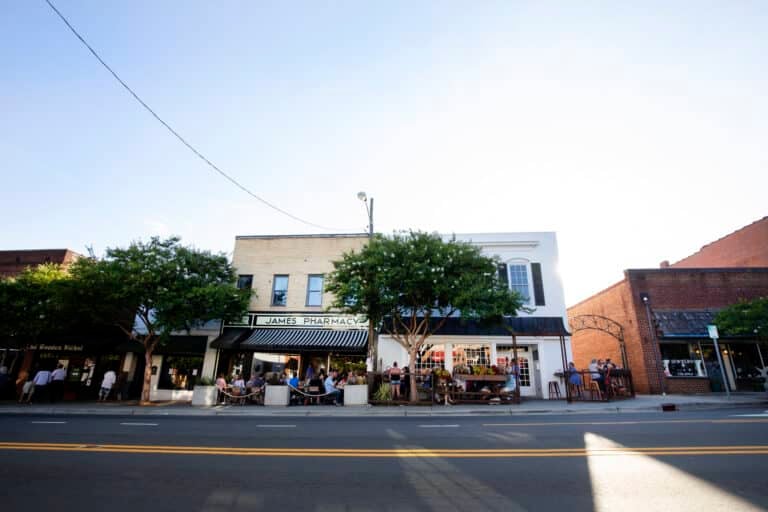In 1995, Blue Ridge Outdoors started as a quarterly newsprint insert in a local alt-weekly. Since then we’ve grown to a monthly magazine on glossy paper with distribution down the Appalachians from Pennsylvania to Georgia, though our mission has remained the same. We’re dedicated to covering the best of the mountains, from inspiring athletes pushing their limits to the scenic spaces you need to visit, including big mountains, wild rivers, and long trails. Here we look back at 30 years of our top stories and favorite moments.

1995
Issue Number One
Blue Ridge Outdoors is first published as an insert in Charlottesville-based alternative weekly newspaper C-Ville Weekly in the fall of 1995. Highlights include coverage of hiking in Shenandoah National Park and a review of the Moraine hiking boot from the defunct outfitter One Sport. The boot weighed four pounds.
In his editor’s note, John Blackburn declared: “Ecosports are here to stay.” He went on to say that the quarterly magazine’s mission would be to motivate readers to explore the outdoors: “Consider this your nudge. And starting with this issue we will nudge you every three months or so. So look for Blue Ridge Outdoors, your source for what’s happening—and for what you can do—out there.”

Big Miles at the Barkley
The infamous Barkley Marathons—led by eccentric race director Gary Cantrell—is extended to its current format, 100 miles (five, 20-mile laps) in the rugged terrain of Tennessee’s Frozen Head State Park. UK runner Mark Williams finishes just under the 60-hour cutoff (59:28:48). To date he’s only one of 20 runners to do so.
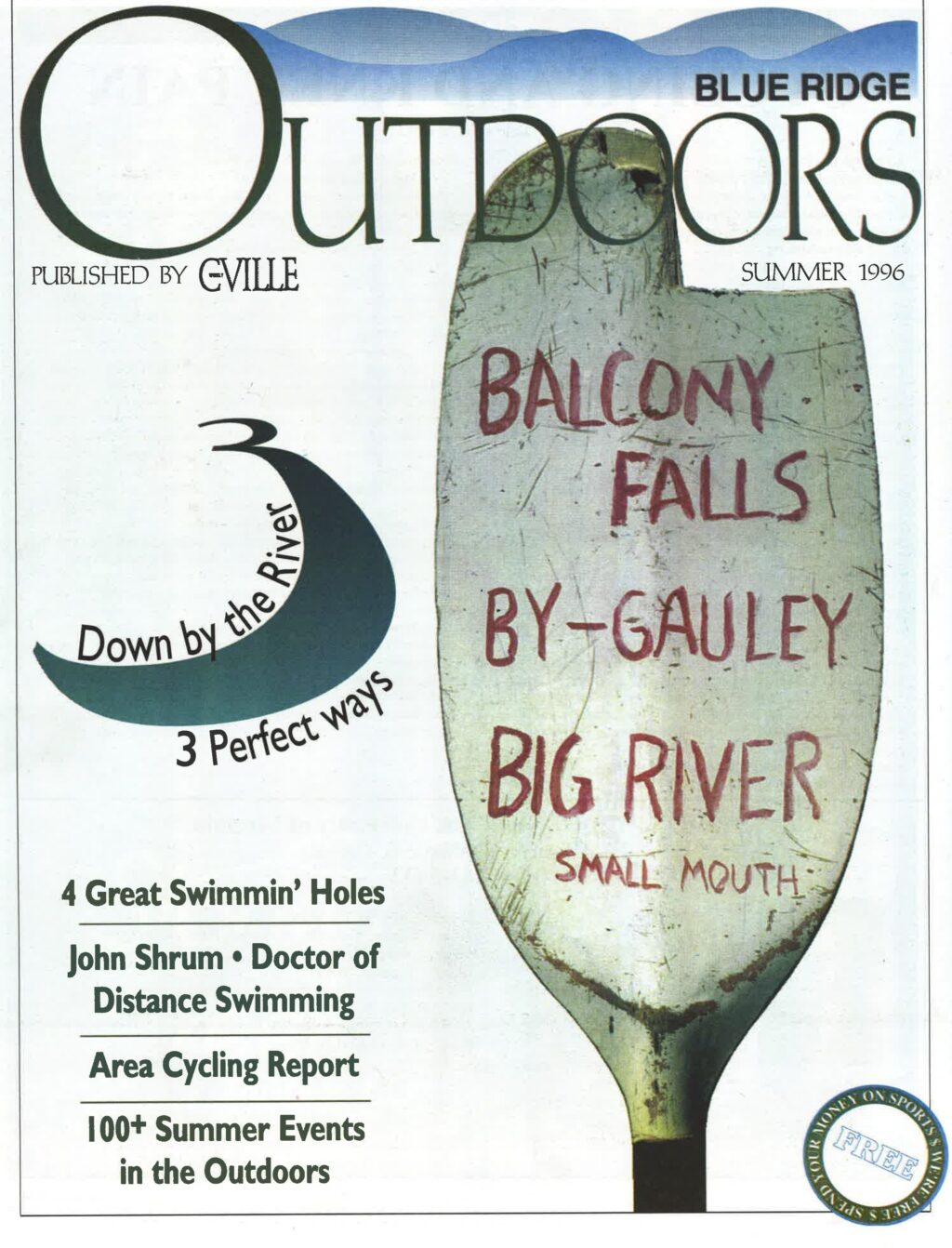
1996
Wild and Free
BRO adopts its first cover motto: “Spend Your Money on Sports…We’re Free.” The magazine remains in print and free of charge to readers to this day.
Good Gauley
The magazine sends a writer to the mighty Gauley River in West Virginia for the first time. Correspondent Eric Gabrielson offers a detailed account of rafting the Class V whitewater on the Lower Gauley: “Another bend, one more rapid, and our trip would be over. However this one more rapid was not just another rapid. Pure Screaming Hell, appropriately named for the sounds that come out of rafters when riding the river monster, was conveniently Class V+. Our strategy was to avoid nasty pourovers and cavernous holes. Again we put our heads down and dug like mad dogs. We eluded the biggest hole, but a low wall of water still exploded over the side, rocking the raft with an earthquake jolt. The team emerged unscathed and yelling for more.”

1997
Tour Dupont’s Demise
In the February/March issue, BRO covers the cancellation of Tour Dupont, an 11-day professional road cycling stage race that featured some of the best cyclists in the world riding from Delaware to the Carolinas. In the piece, writer Andy Morris notes that in 1995 and 1996 the race was won by Lance Armstrong, “considered to be America’s next great cyclist.”
1998
Stay Cool
BRO becomes a monthly magazine and in June publishes its first swimming hole issue. The cover story, titled “Five Hikes and Cool Pools,” tells readers where to take a dip in the Blue Ridge backcountry.
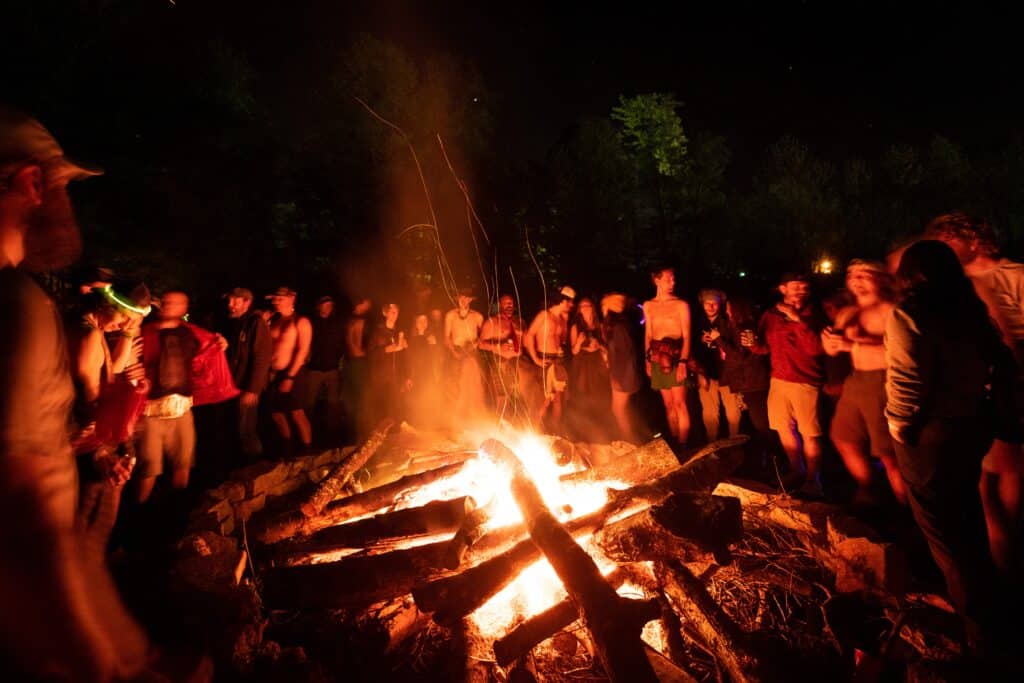
1999
Thru-Hikers Party at Trail DayS
BRO takes one of many trips to Damascus to join Appalachian Trail thru-hikers in the small Virginia town for Trail Days. In the May issue writer Rob Jiranek calls the annual festival “part Grateful Dead show, part state fair.” And he elaborates on the celebration of A.T. culture that remains a beloved regional staple: “It’s the thru-hiker’s equivalent of a college reunion, where new and old hikers gather to party and regale through the night. But that’s not all. The weekend is a carnival of slide shows, day-hikes, a motley parade, music, even a hiker’s talent show in the town park’s gazebo.”
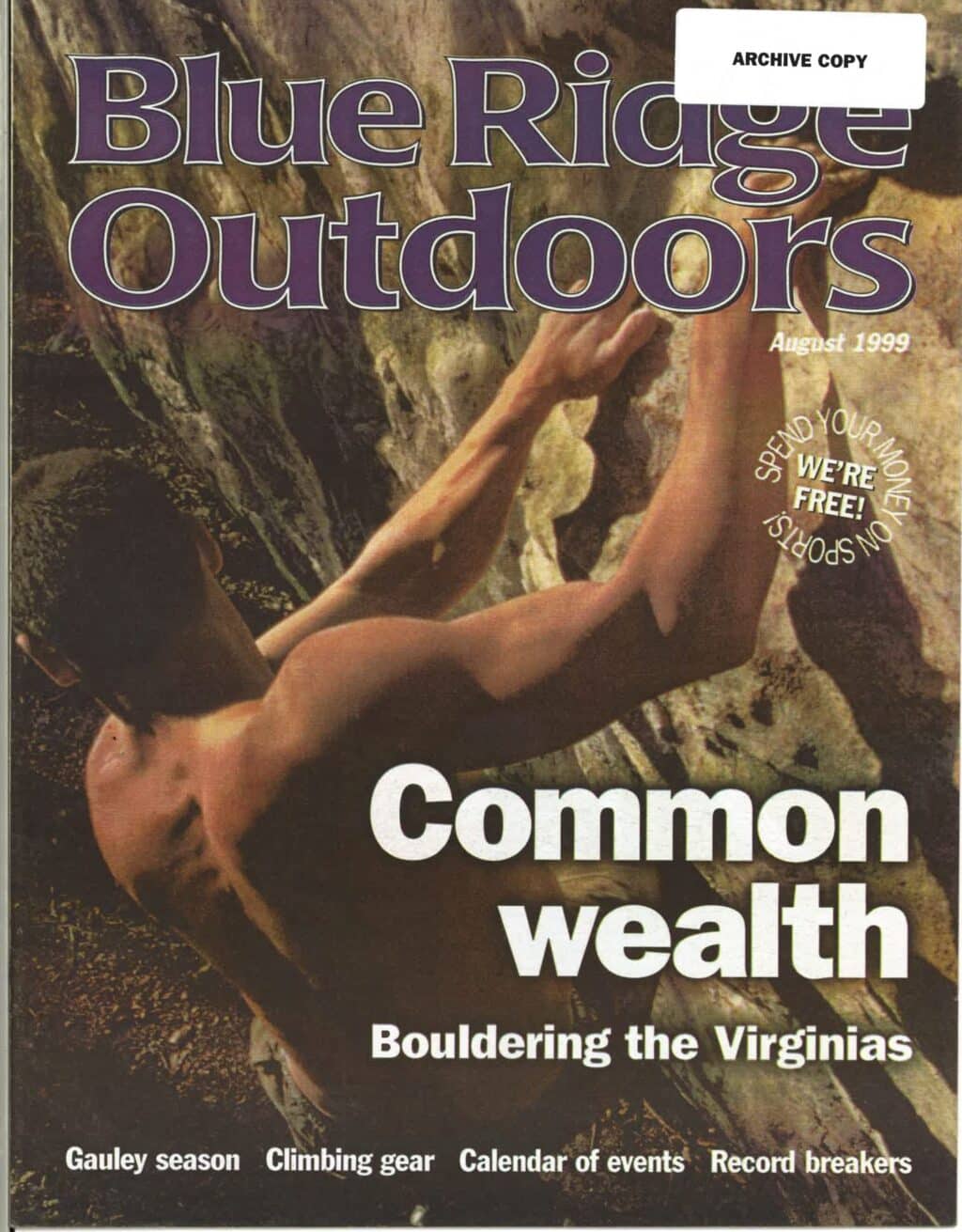
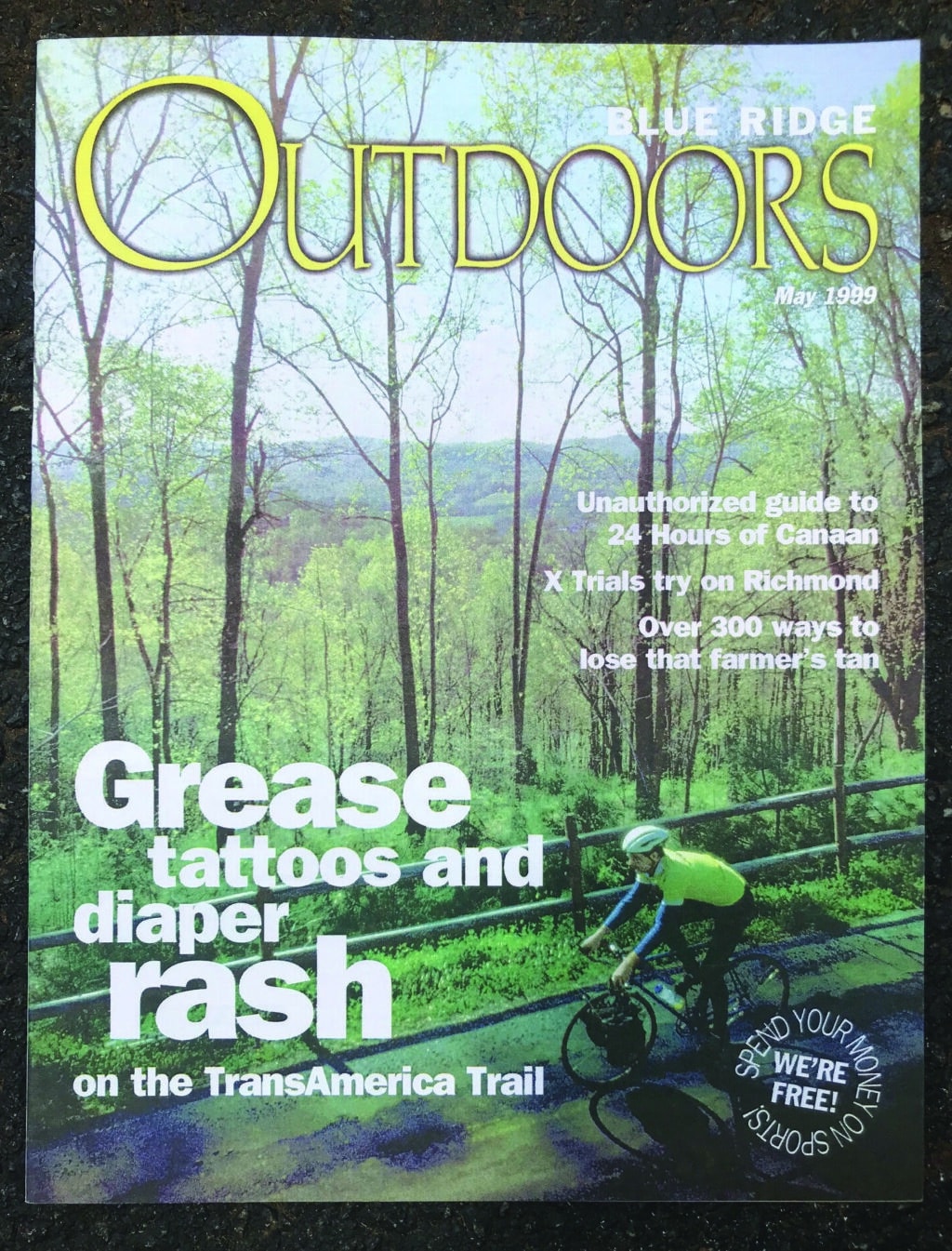
Define Relax
“I’m not looking at it as a race. I see it as a chance to relax and spend ten hours on the bike.”
– Team Gary Fisher rider Thomas Jenkins, in the November issue, on the eve of the first Shenandoah Mountain 100, a rugged ride in Virginia’s George Washington National Forest with more than 6,000 feet of climbing.

2000
McAfee Knob, Again and Again
For the November issue, BRO writer Andrew Phelps takes a hike with Olen Waldrip, an 88-year-old retired minister from Roanoke as the latter attempts a unique goal, hiking the length of the Appalachian Trail, not by hiking the entire trail, but by doing a seven-mile route on the A.T. up McAfee Knob 300 times. According to the piece, Waldrip hikes in a one-dollar pair of Coleman boots and puts a notch in a hiking stick every time he reaches McAfee.

This Gorge Rocks
In the August issue, author and photographer Carl Samples writes an in-depth cover story documenting the history of rock climbing at West Virginia’s New River Gorge. Before the New became a famous destination, known for its variety of challenging sandstone routes, Samples started visiting the Gorge in the early 80s when: “The New offered delicious obscurity; to be a climber here was to enjoy the thrill of the unknown, to share accomplishments with only a small circle of fellow climbers.”
2001
Useful Tool
BRO publishes “The Tool,” a special edition, which then-editor Jeb Tilley defines as a “Snarky, insightful comprehensive compilation of the best outdoor events and organizations in Virginia and West Virginia.” It features organized hikes and road rides, mountain biking and running races, and guides to national forests and state parks. Future versions cover parts of the region farther afield.
Bridge Day Bummer
In the January issue BRO runs a dramatic full-page photo of rappelers coming down from the 876-foot New River Gorge Bridge, taken during the annual Bridge Day festival in October of the previous year. Ten months later the event is cancelled for the first time due to post-9/11 security concerns.
2002
That Guy’s Wheelie Funny
Cycling columnist Timothy Richard Sherman made us laugh for many years with his goofball takes on bike culture. In the July issue he pens an ode to the joys of riding on one wheel called “How to be wheelie cool.” In the column he declares: “If you were to travel the globe in search of one bike maneuver recognized by all cultures, you would undoubtedly find the wheelie is still king. You might ask why someone would so desperately want to ride on the rear wheel alone, and all I can say is that wheelies make the soul smile.”

2003
Where There’s a Will
BRO editor Will Harlan completes a 72-mile run of the Appalachian Trail through the Smokies to raise awareness for the region’s chronic air pollution. After suffering what was determined by doctors to be a pollution-induced asthma attack during the run, Harlan testified as a witness for the state of North Carolina in a lawsuit against the TVA, which ultimately resulted in the authority being forced to spend more than $1 billion on upgraded emissions controls at 14 coal-fired power plants.

Best of the Blue Ridge
The first annual Best of the Blue Ridge Readers’ Choice Awards are published in December. Notable winners include North Carolina’s Max Patch Bald as the Best Place to Sleep Under the Stars, West Virginia’s Cranberry Wilderness as the Most Likely Spot to Get Lost, mountain unicycling as the Best New Extreme Sport, and a Walkman as the Most Unnecessary Piece of Gear. Before the magazine implemented an online voting system, readers tore ballots out of our pages and mailed selections to BRO headquarters in Virginia.
2004
Bon Jovi to the Rescue
When elite mountain biking squad Team West Virginia finds itself without a sponsor, the squad is rescued by an unlikely benefactor, rock singer Jon Bon Jovi. The connection comes via team director Steve Thaxton, who is also Bon Jovi’s chiropractor and personal trainer. The crew of world-class riders officially becomes Team West Virginia Bon Jovi.
2005
From the Blue Ridge to Bonnaroo
BRO debuts its first annual Festival Guide, including what would become beloved mainstay regional events like FloydFest, with a cover image of Yonder Mountain String Band on stage at the Bonnaroo Music and Arts Festival. With the explosion of outdoor music festivals in subsequent years, the guide has been published every year since, except 2020, when the live music industry was thwarted by the coronavirus pandemic.

2006
Mosely’s Advice
Extreme skiing pioneer and Olympic gold medalist (1998) Jonny Mosely chats in the March issue ahead of his appearance at Wintergreen Resort. In the interview Mosely reflects on getting snubbed by judges with a fourth-place finish in the 2002 Olympics after nailing his 720-degree big air fringe move known as the Dinner Roll. “When I did the Dinner Roll and placed fourth, I noticed people connected with not doing the status quo,” he says. “People respond if you put it out there, even if you don’t get the award.”

Kiss My Access
The October cover story digs into the battles regional rock climbers face when trying to secure access to routes at crags like Laurel Knob, Jamestown, and Boatrock. Sean McCleod, president of the Carolina Climbers Coalition, tells us changing the sport’s misunderstood reputation is usually about relationship building with landowners. “Climbing is not that different than fishing,” he says. “It’s just a different medium for getting outside to relax and forget about everyday life. When you explain that to people, they start to understand that you’re not an outside enemy.”
2007
Stranger Things
In the April issue BRO features some of the Southeast’s strangest races, including the World Naked Bike Ride in Washington, D.C., and North Carolina’s Krispy Kreme Challenge, which includes running two miles, then eating a dozen donuts before running another two miles.
Parks in Peril
“If we don’t take significant action immediately, we will lose the vitality, health, and long-term future of our national parks. We need the American public to speak up and say that we collectively do want these parks protected and handed to our grandchildren.”
– National Parks Conservation Association President Tom Kiernan, in a January issue interview about the problems plaguing our region’s national parks, particularly air pollution, invasive species, and budget shortfalls in Shenandoah and Great Smoky Mountains
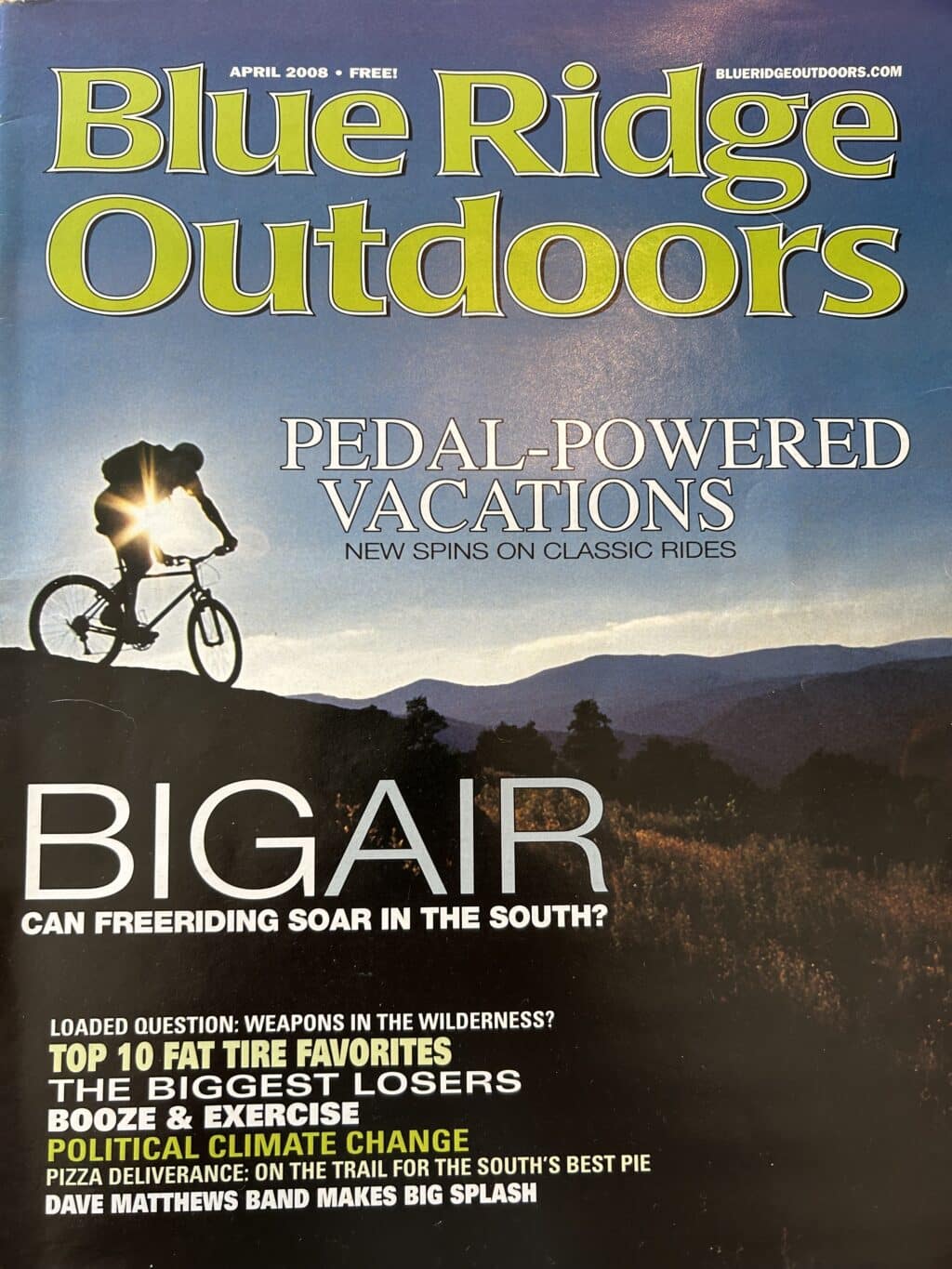
2008
Amputee Ironman
BRO interviews double amputee Ironman Scott Rigsby in the March issue. The Atlanta-based Rigsby details the journey from losing both his legs due to a truck accident to becoming the first double amputee to complete an Ironman triathlon at the Ironman World Championship in Hawaii. “During the run I had to stop every four miles to dump the sweat out of my legs,” Rigsby says. At mile 16 the race director told me I wasn’t on pace to make the overall cut-off. I made the decision that I wasn’t going to stop anymore. My skin was getting really saturated, and I was basically running on wet blisters around my knees. It was the worst pain I’d ever inflicted on myself.”
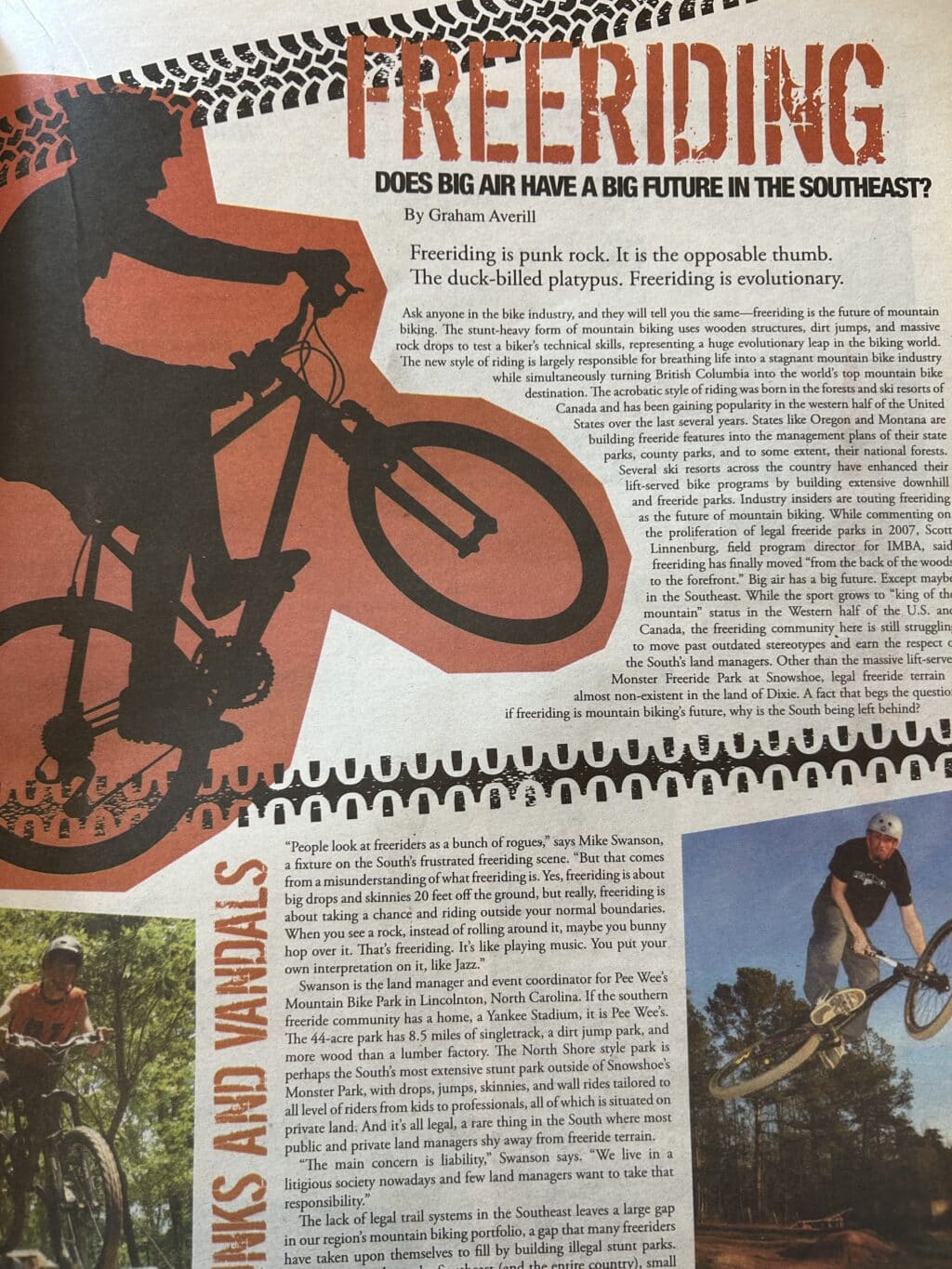
Come on and Take a Freeride
The April cover story devotes significant ink to the growing trend of freeriding, stunt-heaving mountain biking that challenges riders with wooden structures, dirt jumps, and rock drops. “People look at freeriders as a bunch of rogues,” Mike Swanson, land manager and event coordinator for Pee Wee’s Mountain Bike Park, tells us. “But that comes from a misunderstanding of what freeriding is. Yes, freeriding is about big drops and skinnies 20 feet off the ground, but really freeriding is about taking a chance and riding outside your normal boundaries. It’s like playing music. You put your own interpretation on it, like jazz.”

2009
The $5 Camp Stove
In the August issue, Virginia hiker Jim Wood tells us how to build a camp stove for around five bucks. His DIY creation, which gains viral popularity among backpackers, is dubbed the Super Cat, made with a 24-ounce can of beer and a three-ounce aluminum can of cat food. “People like it because it’s so simple to make,” Wood says. “You can make one in two minutes, and it’s one of the fastest burning alcohol stoves out there.”

Best Jobs Ever
BRO goes behind the scenes of the best outdoor occupations in the region in the September issue. The magazine profiles a paddling film producer, mountain bike guide, climbing gear designer, and an Appalachian Trail Ridgerunner. The latter, Susan Powell, spends her days on the A.T. helping hikers and performing trail and shelter maintenance. “I wake up at 6:30, eat breakfast, pack up, and I’m on the trail by 7:30,” says Powell, who sleeps on the trails 130 nights a year.

The Last American Man
BRO interviews Eustace Conway at his remote Turtle Island Preserve near Boone, N.C. In an extensive profile in the April issue, Conway—who’s also the subject of Elizabeth Gilbert’s best-selling biography The Last American Man—laments American overconsumption and shares advice on connecting with the natural world: “The best way to understand nature is to be involved with it—touch it, smell it, be moved by it physically, emotionally, spiritually.”
2010
Knight Owl
In the February issue, Laird Knight, the inventor of 24-hour mountain bike races, talks to BRO about starting the format with 24 Hours of Canaan in West Virginia and how it’s expanded globally. “I’m really proud that this has become a worldwide phenomenon,” Knight says. “Now the largest events are not in the United States anymore. There are races all over Europe, and two of the biggest 24-hour races are in Australia. This format was designed to be fun for mountain bikers. That’s what we’ve accomplished.”
Linville Falls First Descent
In August, whitewater boater Pat Keller makes a first descent of North Carolina’s Linville Falls, a triple-tiered waterfall that was long viewed as not runnable by some of the region’s most experienced kayakers. Describing the landing of the epic, 90-foot plunge, Keller, 24 at the time, said, “Weight forward, a little heavy on my left edge, time slowed to a near standstill. I was watching the far wall go up and up and up, waiting for the hit that I knew was coming. Although the hit was large, and my ribs were a bit bruised from the water’s impact, I was stoked.”
2011
Make Your Own Gear
“Building gear from scratch can be tedious and frustrating, but the sense of empowerment that comes from using a finished product is priceless. DIYers can also get more from their gear through repair. Once you learn how to put something together, you will know how to keep it together. All too often, people get rid of damaged articles of clothing and gear that are perfectly fixable. Outdoor enthusiasts would be less inclined to dispose of these items had they a better sense of the time and energy invested in each product.”
– Ultrarunner Matt Kirk, in the November issue, in a first-person essay on why he makes his own gear, including lightweight packs and minimalist shoes. Kirk used one of his own ultralight packs while setting an unsupported FKT on the Appalachian Trail in 2013.
2012
Canoe Comeback
In the March issue, BRO covers the resurgence in whitewater canoeing and interviews boaters, including Dooley Tombras, who are bagging first descents in big open boats that are heavier and harder to navigate than kayaks. “I like the added challenge and the aesthetic value of running a river in a canoe,” Tombras says. “It’s like telemark skiing or fly fishing. Yes, it’s harder, but that’s part of the beauty.”
Meet the Peak Bagger
BRO’s Graham Averill climbs 4,208-foot Clinch Mountain with Virginia’s Rick Shortt, who spends most of his time outside work hiking to the top of peaks in the South and beyond. At the time of the interview, Shortt has bagged 1,180 peaks across the country, including 358 in Virginia and 158 in North Carolina. “If I’m not climbing a peak, I’m on the computer researching a peak to climb,” Shortt says.

2013
Readers Have Spoken
BRO receives over 34,000 votes from readers to name the region’s Best Mountain Towns for the November issue, notably naming Roanoke, Va., the Blue Ridge’s Best Trail Town and Fayetteville, W.Va., the Best River Town. The selections have evolved into the magazine’s Top Adventure Towns contest, which still takes places every fall.
Bare Me or Spare Me
“Clothing-optional and clothes-free campgrounds and RV parks across the United States offer a way to escape the craziness of the city and return to nature, on many different levels. “Think about the possibilities of a nude camping experience. If you are not wearing any clothes, then you have no place to put your cellphone.”
-Carolyn Hawkins, a member of the American Association for Nude Recreation, in a September story that debates the merits of exploring the backcountry in the buff
2014
Live Outside and Play
Travel Editor Jess Daddio launches the Live Outside and Play program, becoming the magazine’s first staff editor to live on the road and file stories from remote locations around the region. In a memorable dispatch in the June issue, she travels north to the Laurel Highlands of Pennsylvania and interviews legends from the Ohiopyle whitewater scene, including three-time U.S. National Women’s Champion Kara Weld.
2015
Tele Wipeouts
In the February issue, BRO talks to telemark skiers about the joys of free-heeling in the backcountry of Maryland, Virginia, and Pennsylvania. Tele ripper Ben Scoville tells us about a nasty wipeout he experienced in the latter. “Hit a head wall from Giant Boulder on to Giant Steps at Seven Springs. Had a pretty good head of steam. Blew up when I landed and tomahawked down the hill. Because I had teles, I stayed right on my feet. Ended up having a ski tip shred open my paddling pants (yes, paddling pants, they kept the snow out). from just above my boots up to my upper thigh. Almost ended up singing in the boys’ choir.”
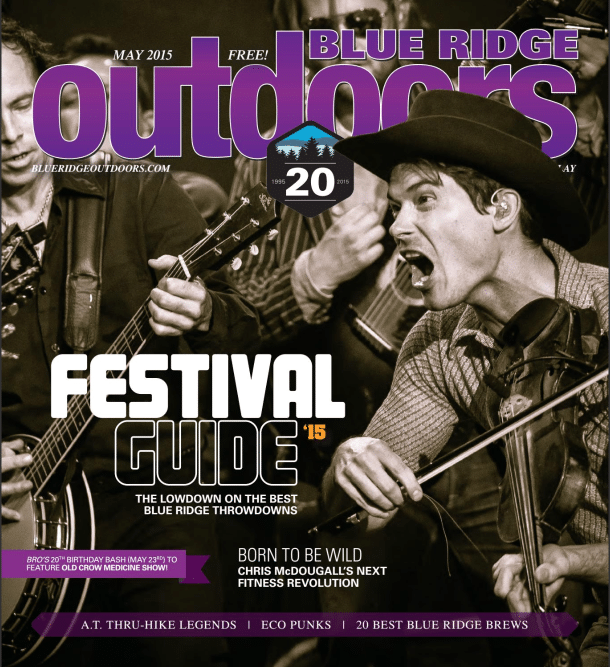
20 Years of BRO with Old Crow
BRO celebrates its 20th anniversary with a big concert at the Sprint Pavilion in the magazine’s hometown of Charlottesville, headlined by roots music heroes Old Crow Medicine Show. Of his upbringing in Virginia’s Shenandoah Valley, Old Crow’s Ketch Secor tells us: “It’s one of the places in the South where a musical heritage really exists, and that musical heritage can best be exemplified by a fiddle or banjo.”
2016
Winter Thru-Hike
Tom Gathman, known as the Hiking Viking, spends the first four months of 2016 on a winter southbound thru-hike of the Appalachian Trail, braving sub-freezing temperatures and summiting snow-covered peaks before finishing at Georgia’s Springer Mountain in late April. Later in the year he tells BRO, “For most of the journey I was either in motion or about to get in my sleeping bag—those were the two ways I existed in that world. It was rugged, treacherous, and freezing. I had to fully accept those conditions and approach the thing one numbed footfall after the next.”

Insta Overkill
In her takedown of “Outdoor D-Bags” in the December issue, author Rachel Walker has a message for those who overshare outdoor experiences on social media: “Who cares how #blessed you are when you #exploremore and #getoutside? Doing #SUPyoga at sunrise doesn’t make you more #blissed than me. Especially when I see it on your Insta/Twitter/Facebook/Snapchat feed within minutes of said #accomplishment. Instead it’s like #OMFG.”
2017
Pro Hikers
In the November issue, regular BRO contributor Eric J. Wallace writes a feature called “Rise of the Professional Hiker,” profiling serial trekkers who can make a living while spending most of their time on trails. With hikes of the 7,778-mile Sea-to-Sea Trail and 6,875-mile Great Western Loop on his resume, Andrew Skurka generates income through a mix of writing, guided trips, lectures, and presentations, counting companies like Google and Microsoft as clients.
Single Speed Ain’t Dead
“I choose to ride a single speed because I think it makes you a better rider. It forces you to use your bike and your body rather than just shifting.”
-Shanna Powell, owner of Endless Bike Co., in a September issue story about a niche group of mountain bikers still embracing gear-free rigs.
2018
Lose the Ego
In a popular feature in the October issue called “Hey, Outdoor People—Lose the Ego,” longtime contributor Bettina Freese interviews regional mountain sports athletes about keeping performance expectations in perspective. “When I’m in the woods, it provides a tranquil setting for me to be in a quiet place of reflection,” mountain biker Trey Thomas tells her. “When you’re trying to one-up, rather than being content and appreciative of that quiet space or just being with your friends, and feel you have to prove yourself and show how cool you are, that’s when you get hurt. That’s when mistakes happen.”
The Hunt for Eric Rudolph
Contributing writer Kim Dinan writes an expansive report detailing the manhunt for Olympic bomber Eric Rudolph in the mountains of western North Carolina. The chase started in 1998 and didn’t end until Rudolph was apprehended and arrested behind a Save-A-Lot store in Murphy, N.C. Writes Dinan, “In the end, the manhunt cost millions and set off a culture clash that reverberated throughout the mountains and beyond.”
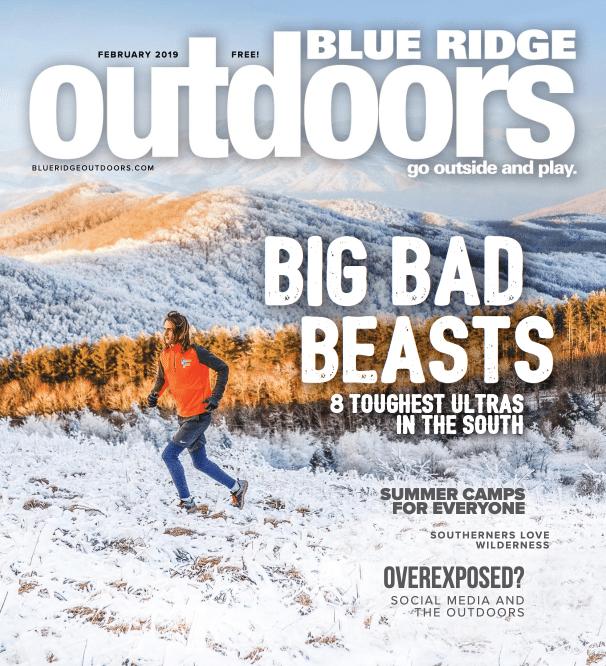
2019
Ultra Endurance
In the February issue, BRO reports on the growing number of ultramarathons across the country and focuses on eight of the toughest races in the region, including the Mount Mitchell Challenge and Hellgate 100K. Karl Meltzer, a former holder of the fastest known time on the Appalachian Trail who’s completed more than 100 ultramarathons, tells us, “The mental part is can I actually suck it up for 20 hours, 30 hours, 40 hours, or whatever. That’s the fun part—well sort of the fun part—when you cross the finish line. It doesn’t even matter what your time is. It’s just a matter of you got it done. That’s the real addiction.”

2020
Isolated Adventures
As the Covid-19 pandemic worsens in March, state governors in the Blue Ridge region start issuing stay-at-home orders and suddenly access is restricted to beloved destinations like Shenandoah National Park and the Appalachian Trail. In the June issue, former travel editor Ellen Kanzinger’s feature story “Adventures in Isolation” covers how the region’s athletes and adventurers find creative ways to stay active outside, including yard campouts and virtual marathons.
Taking Action
“Everyone has had to snap into action mode and put their best foot forward every day,” he says. “All sides of humanity come out on display in difficult times but I’m super grateful to be working with a great group of people who are rising to the occasion. I go home at night and I’m emotional about it. It’s exhausting and gratifying all at the same time.”
– Tom Dempsey, founder of North Carolina-based pop-up adventure camper company, in the May issue. At the onset of the pandemic, the company shifted to producing face shields, sneeze barriers, and foot-operated door-opening devices for healthcare workers. The company’s supply team in Thailand also helped procure 200,000 N95 masks per week and thousands of Tyvek suits for local and state distribution.

2021
He’s Back
Former staff editor Graham Averill returns to BRO’s pages to share thoughts on adventure (and misadventures) in his new monthly column, the Out and Back. One of the most popular pieces in the ongoing series runs in the January issue and features Averill lamenting the task of getting his two kids to the slopes. He writes: “The worst part of skiing is the preparation. The logistics. Getting ready to ski is the DMV line of adventure sports, especially when there are kids involved. Have you ever tried to get a family of four out the door for a day on the local ski hill? There is nothing in this world harder. Summiting Everest without oxygen is a walk in the park compared with trying to get two kids to put their damn socks on at 7am as you’re rushing to try to get first chair.”

A Senator’s Adventure
In the December issue, Senator Tim Kaine writes a story for BRO detailing his epic three-part adventure he calls the Virginia Nature Triathlon. He recounts a three-year endeavor that included hiking the entire portion of the Appalachian Trail in the Commonwealth, cycling Virginia’s entire stretch of the Blue Ridge Parkway, and paddling the length of the James River—a human-powered feat that totaled 1,230 miles. Kaine writes: “Elected officials often tour their states during weekends and recess weeks, but these tours are usually quick visits by car or plane. Considering Virginia has so much stunning terrain—from the mountains to the ocean—I wanted to take the time to really explore.”
2022
Still Wild
“The experiences I had on the trail taught me a lot about how to call upon my courage, how to endure, how to accept each moment for what it is, how to humbly submit to the sometimes painful tedium of making progress one step at a time. Those formative lessons have spilled over into other areas of my life. They’re things I carry with me always. I lean on them in hard times.”
– Author Cheryl Strayed, in a Q&A interview the July issue reflecting on her time on the Pacific Crest Trail and her best-selling book Wild

Digital Nomads
In the March issue, BRO profiles Peter and Allison Barr, a couple who left their home in Asheville to work remotely and live on the road in a Class C motorhome—roaming the mountains and bagging peaks in between laptop Zoom meetings. The lifestyle is part of a trend that gains popularity during the pandemic. According to a stat in the story the amount of people who identify as digital nomads jumped 49 percent nationally from 2019 to 2021. Allison tells us, “We wanted to have deep and meaningful experiences while we’re still young.”
Inviting Everyone to the Campfire
“Black folks need to see more folks like us experiencing the outdoors. Representation matters. And when we’re out there together as one people—folks of all races can enjoy having amazing conversations, enjoying the outdoors together—we can replace division with unity.”
– Earl B. Hunter, in the March issue, explaining why he started Black Folks Camp Too, a business focused on educating people of all backgrounds and skill levels about the outdoors
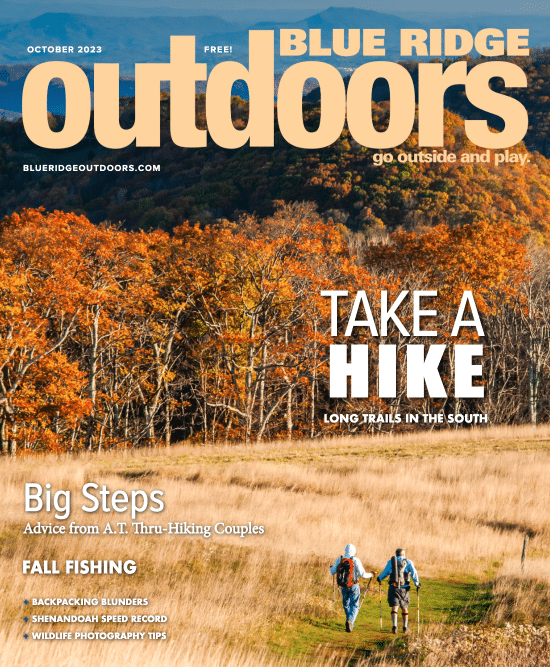
2023
A.T. Couples
“Everything on the trail is amplified by hunger or tiredness. So, supporting each other really comes down to having a little extra patience than you would in regular life.”
– Justin “Humo” Nolen on hiking the entire Appalachian Trail with his partner in the October issue, in a story titled “Big Steps: Tips from Thru-Hiking Couples.”

2024
The Devastation of Helene
Hurricane Helene roars into the Southeast in late September, decimating Asheville and surrounding mountain towns in western North Carolina. In a story in the November issue, contributing writer Mike Bezemek details how the members of the outdoor community stepped up to assist with recovery efforts, rescuing trapped residents and delivering water, food, and supplies to displaced friends and neighbors. “I saw some pretty devastating things,” Andrew Wilmot, a swift-water rescue instructor for the Nantahala Outdoor Center, tells BRO. “People washing away in cars. People drowning. People losing everything.”

New Speed Queen
In September, Tara Dower, a 31-year-old ultrarunner from Virginia Beach, sets a record for the fastest known time on the Appalachian Trail, completing the famous footpath in 40 days, 18 hours, and six minutes—13 hours faster than Belgian runner Karel Sabbe’s 2018 record. In the December issue, Dower tells BRO contributor Lauren Stepp, “I don’t think women are encouraged to test their limits, especially in athletics. I want to inspire people, specifically young girls and women, to set big goals and to go for it.”
2025
BRO Turns 30
To celebrate three decades as a magazine, BRO will host a 30th anniversary event at Devils Backbone Brewery in the mountains of Virginia on June 14 and 15. Join us for live music, regional craft beer, and outdoor activities, including camping and rock wall climbing. More info: dbbrewingcompany.com.
